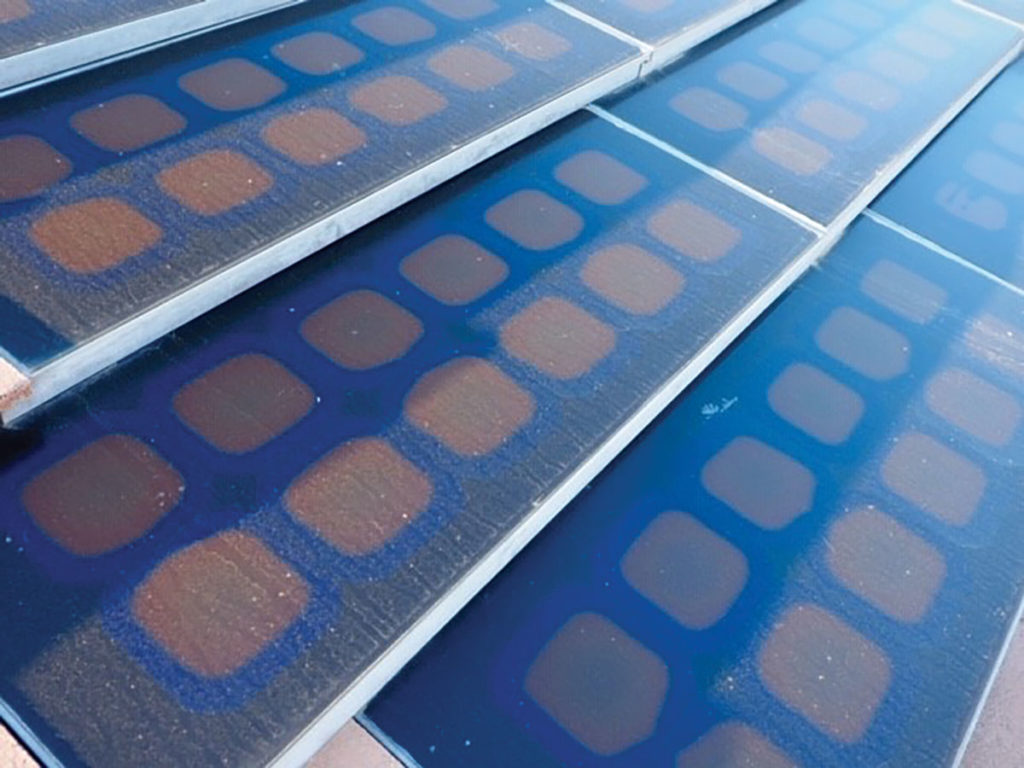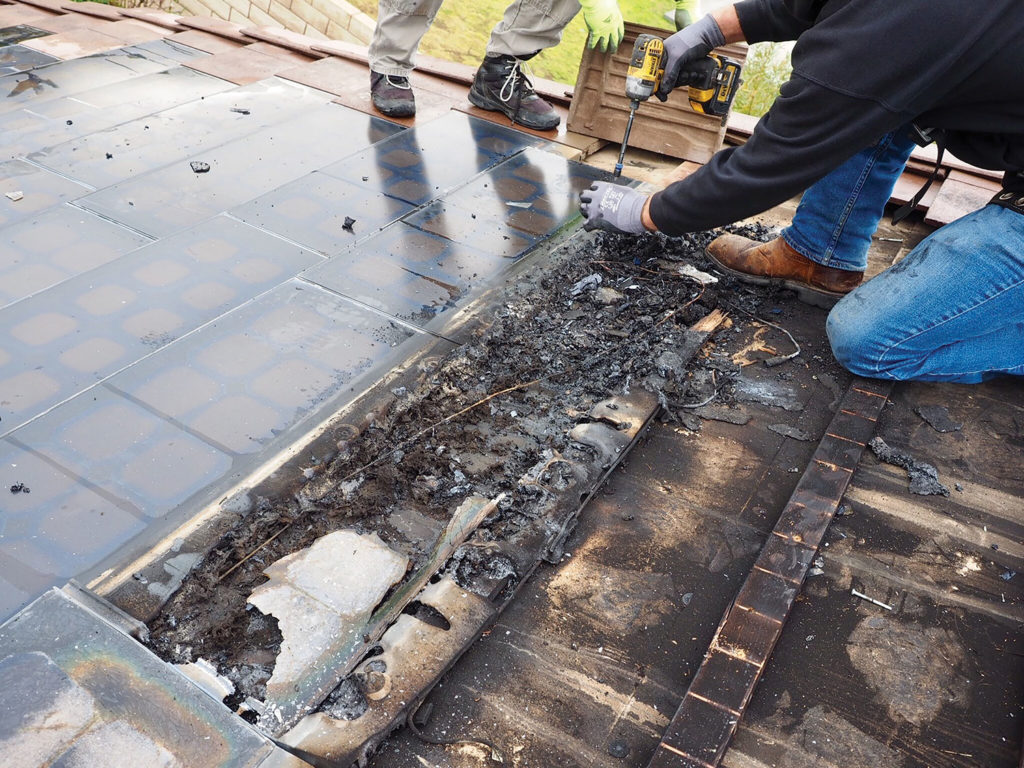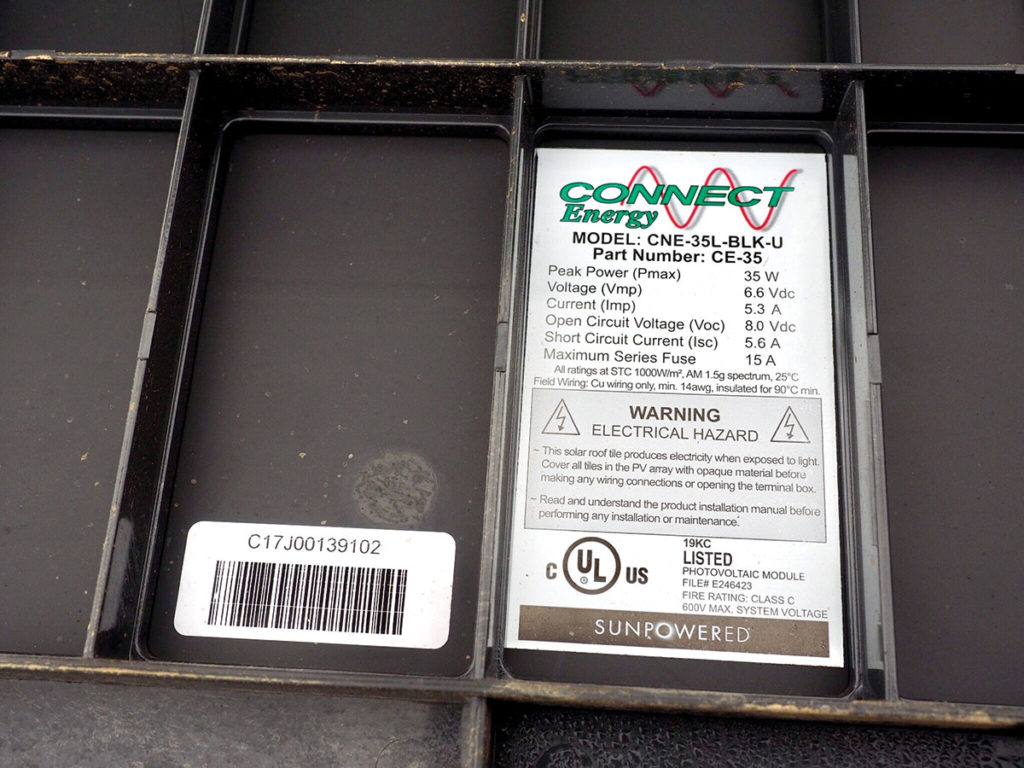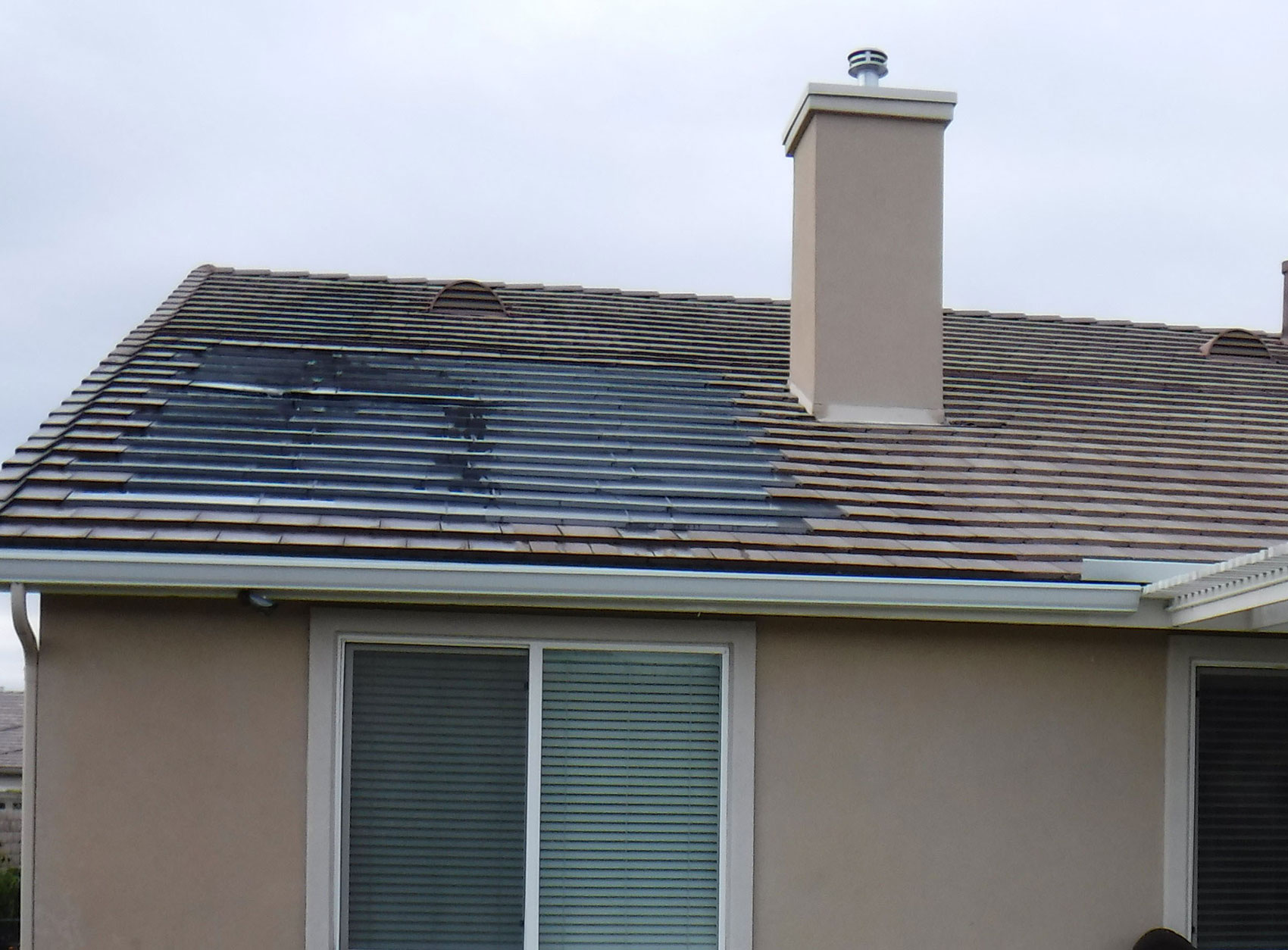A fire occurred on the roof of a house that had a photovoltaic (PV) system installed on that roof and the PV system was involved in the fire. The Authority Having Jurisdiction (AHJ) in this California jurisdiction had inspected and approved the installation of that PV system, which was installed in 2007 during the local housing boom. Following the incident, the AHJ was requested by the building department to inspect the damaged area and assist in the investigation of the cause of the fire.
The fire was contained to a section of a $60,000 building-integrated PV (BIPV) system on the roof. The modules were attached to the roof sheathing in a manner that would match the tiles on the rest of the roof. While the fire appeared to be contained to a portion of the PV system, there was some damage to the roof sheathing and underlayment under the portion of the BIPV array where the fire occurred.
From the available evidence at this stage in the investigation, it is highly probable that the fire originated and was started by some defect in the PV module or in its installation.
A review of the installation documents and a web search could not locate the manufacturer of the PV modules. The manufacturer of the modules may be out of business. Numerous other houses in the community—and probably throughout the state and the country—had similar BIPV systems installed at about the same time. The owner of a neighboring house said that he also had a fire (not reported to this AHJ) several years earlier in his identical PV system. Also, a rigorous search of past permits in the jurisdiction revealed several other houses with nearly identical BIPV systems.
Module inspection
One of the undamaged 35-watt PV modules was removed and inspected. As can be seen in photo 3, the module has a label identifying the manufacturer (but no address) with additional information indicating that it was certified/listed by Underwriters Lab

oratories (UL) including a UL listing mark, and a file number (E number). The label also has all of the National Electrical Code (NEC) required markings for a PV module and appears to comply with UL Standard 1703 for such markings.
The system was properly permitted, plan reviewed, and inspected based on the information available to the AHJ at the time of the installation. The fact that the module was marked as being listed alleviated the AHJ from making a detailed safety examination (NEC 90.7) of the PV module. However, during the investigation of the fire, the term at the bottom of the label on the back of the PV module came into question. That term “SUNPOWERED” was very close to the name of a large manufacturer of PV modules known as SunPower.
Information available from UL.
The AHJ went to the product directory at UL, created an account, and signed in. A search of the company name, Connect Energy, returned no results. An initial search of the UL file Number E246423 led to the SunPower listing of certified/listed PV modules, but the modules were all over 200 watts, and the listings did not include any 35-watt PV modules.
The AHJ contacted the SunPower Corporation and determined the following information. SunPower had manufactured the PV laminate (glass, cells, and back sheet) for Connect Energy, and these laminates were supplied without any fames, junction boxes, cables, or connectors. SunPower was able to mark these laminates as a UL Recognized Product under the UL File Number E246423 Vol 2, Sec 2, but did not mark them as a listed product because they were not complete as manufactured and did not meet the full requirements of UL Standard 1703 for PV modules.
SunPower, aside from selling the laminates to Connect Energy, was not involved in the final assembly of the BIPV module which included the frames, the junction box, the cables, and the connectors. Nor was SunPower involved in any way with making and attaching the label used on the 35-watt BIPV module.

An Investigation at UL
The AHJ then contacted UL and provided their engineers with pictures of the back and front of the BIPV module. [According to correspondence between UL and the AHJ], UL confirmed that the Connected Energy 35-watt BIPV modules were not authorized to bear the UL Listing mark. UL also verified that SunPower had made the 35-watt laminates for Connect Energy, and that those laminates were properly described in the SunPower File Number E246423 Vol 2, Sec 2 as laminates without junction boxes, cables, or connectors. Additional details concerning the UL investigation into this matter are confidential.
Continuing actions
The AHJ contacted the insurance company involved with this fire and also contacted homeowners’ associations for other homes in the jurisdiction that had been identified as having this type of BIPV system. The homeowner’s associations have communication channels with both their members and the insurance companies and may have means to identify other homes with this particular type of PV system.
Since the PV modules have a falsified (fake) UL Listing mark and UL Listing information, the installed systems do not meet NEC requirements which mandate fully listed PV modules (NEC Section 690.4). The AHJ will visit each identified house where these systems are installed and require their removal. This is a mandatory action for homeowner/occupant safety and to comply with NEC installation requirements, as well as local jurisdiction requirements.

Actions for the AHJ and plan reviewer
In all areas of product safety—not just electrical systems and equipment—UL is continually waging a war against counterfeit and fake listing marks, symbols, and false information. It is now evident that this war has moved into the PV arena.
The PV market is seeing an increase of numerous new PV modules, inverters, combiners, energy storage systems, and other equipment from many new manufacturers. This will continue as we move into a more widespread awareness of environmental impacts and the fact that renewable energy systems will be a major player in addressing and minimizing those impacts. Unfamiliar company names and products could allow for and possibly promote the entry of unlisted (improperly listed, counterfeit) PV equipment into the market (A UL representative has stated they are not aware of a PV counterfeit epidemic. This incident appears to be isolated.)
As the first line of defense of electrical public safety, the AHJ and the plan reviewer are in an ideal position to keep this issue under control. I strongly suggest that each permit application be required to include the listing information for each major product being installed in a PV system. That information, in a separate list, would be required (at minimum) for PV modules, inverters, DC combiners, PV rapid shutdown equipment and systems, and charge controllers. This information would include the name of the product manufacturer, the model number, country of origin, the certifying/listing Nationally Recognized Testing Laboratory (NRTL) (including UL, ETL, CSA, TUV), the listing file number (E-number or equivalent), and any other pertinent information.
The plan reviewer (or the AHJ in the office prior to any inspection) should then verify this data against the online files of the NRTL to ensure the listing is valid. The AHJ, during the field inspection, should verify that the information provided with the permit application actually matches the information on the equipment being installed. It has been reported to me that throughout the country frequently the equipment that arrives on the jobsite is not the equipment listed in the permit application. This could create installation delays while the permit application is updated and reverified.
While the previously described fire did not result in any loss of life and the property damage was not significant, there will be significant costs associated with removing and replacing the PV array. I suggest that every jurisdiction that has installed any building-integrated PV systems in the 2005 to 2012 time period review their records and determine if these Connect Energy BIPV modules were installed. [A UL representative said Connect Energy is not on any watchlist they have, nor is the company the subject of any subsequent investigations.]
The safety of the public is paramount. It’s important for the plan reviewer and AHJ to determine what steps they can take to minimize these types of accidents from occurring. (Please note: In this account, the name of the jurisdiction, the name of the AHJ, and the name of the national PV installer have been withheld for legal reasons.)











Find Us on Socials